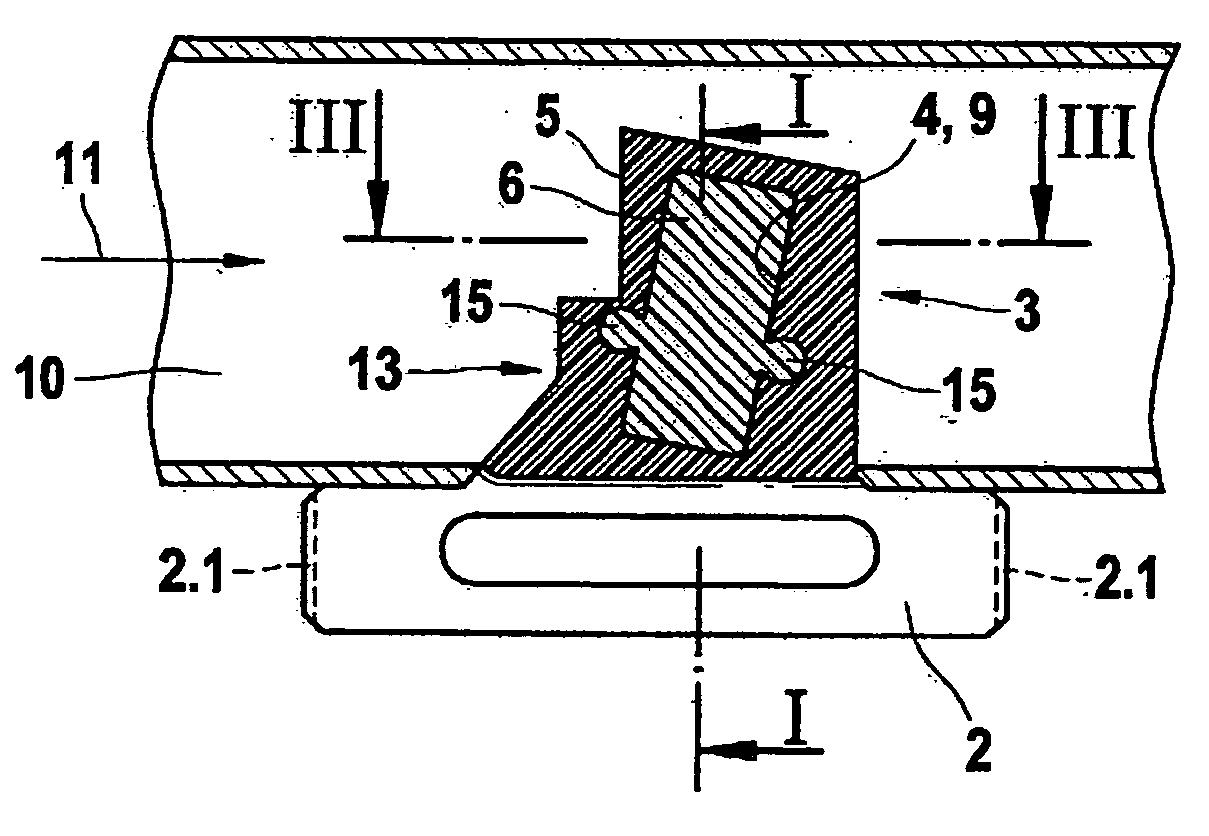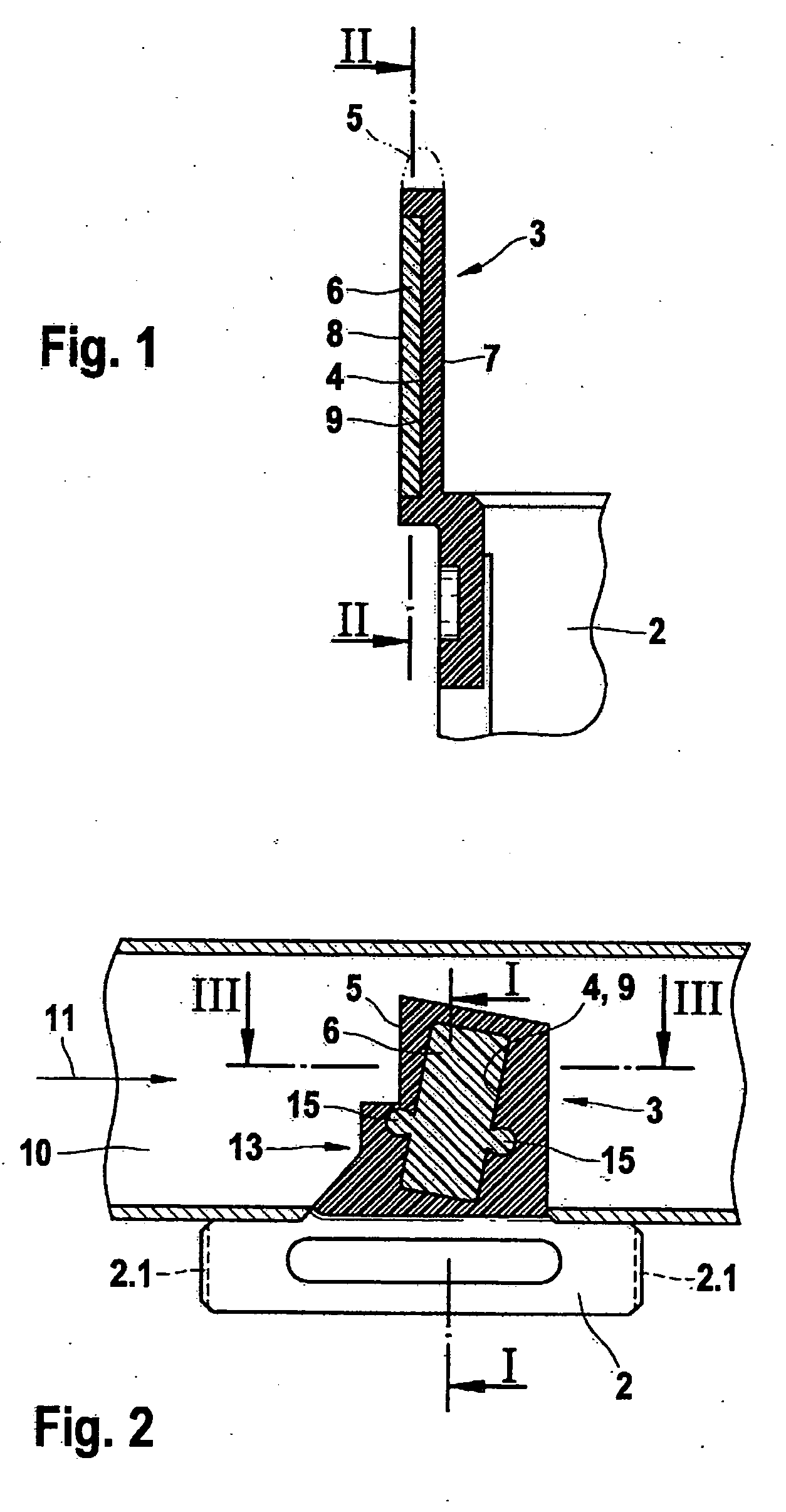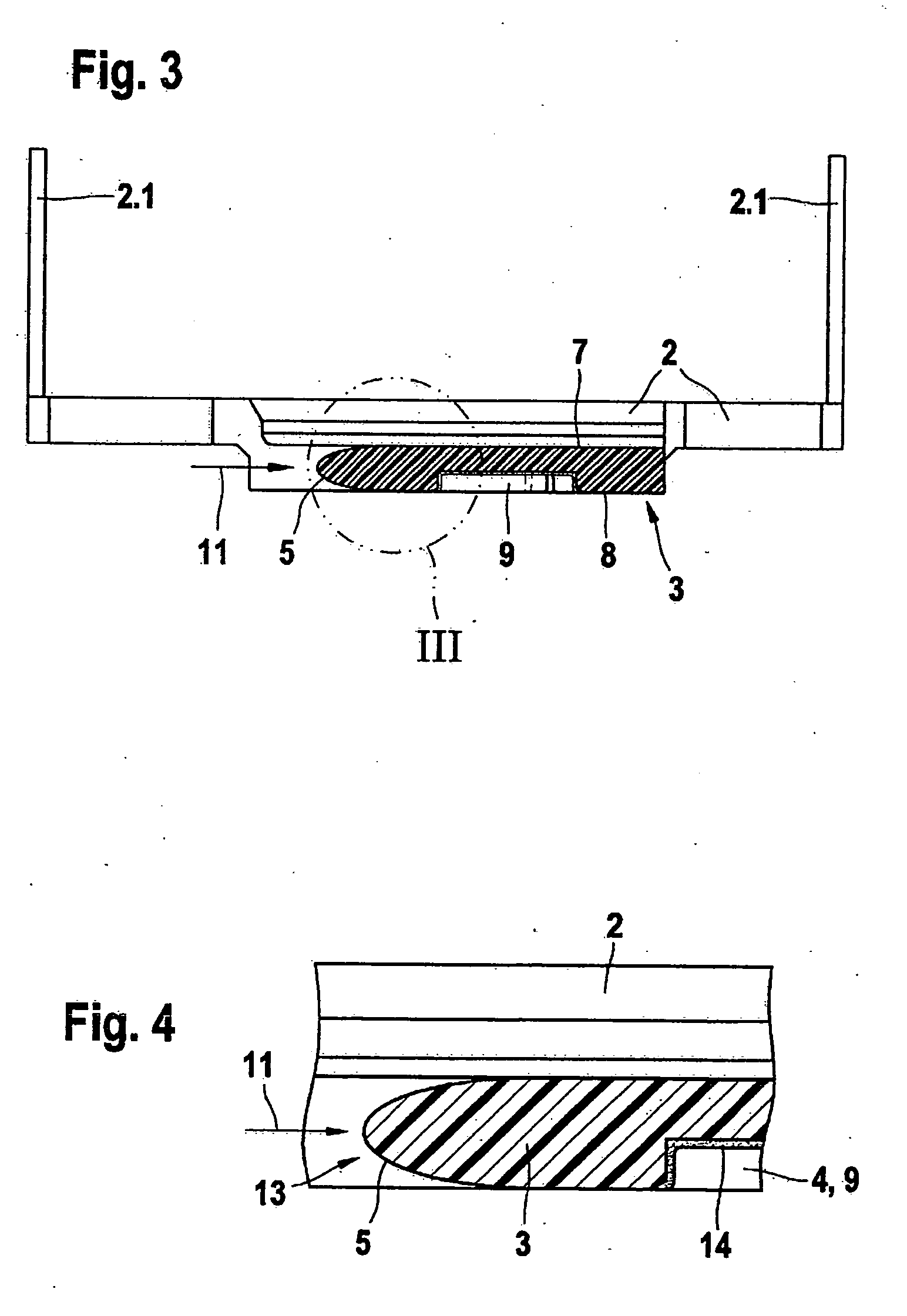Printed-circuit board having a plastic part for accommodating a measuring device
a technology of measuring device and printed circuit board, which is applied in the direction of measurement device, volume/mass flow measurement, instruments, etc., can solve the problems of sensor gel running out, sensor chip air flow changing, and characteristic curve drifting, etc., to achieve cost-effectiveness, improve quality, and improve production efficiency
- Summary
- Abstract
- Description
- Claims
- Application Information
AI Technical Summary
Benefits of technology
Problems solved by technology
Method used
Image
Examples
Embodiment Construction
[0021] In FIG. 1 one may see, on a considerably enlarged scale, a plastic tongue for accommodating a sensor chip. Onto an electronic module 2, there is laterally extruded on a plastic substrate tongue 3. The plastic substrate tongue includes a recess 4 having a flat floor area, into which a sensor chip 6 may be inserted. Plastic substrate tongue 3, according to the illustration in FIG. 1, extends into a bypass channel, not shown in FIG. 1, which has a flowing medium flowing through it. The flowing medium sweeps over plastic substrate tongue 3 both on side 8, at which sensor chip 6 is accommodated and on back side 7. Recess 4, inside plastic substrate tongue 3, is constituted as cavity 9, and encloses sensor chip 6 on all sides. At plastic substrate tongue 3 an air flow edge 5 is formed which, according to the illustration in FIG. 1, may be formed as a round shape. Sensor chip 6, that is insertable into recess 4 that is constituted as a cavity 9, is preferably developed in a height t...
PUM
 Login to View More
Login to View More Abstract
Description
Claims
Application Information
 Login to View More
Login to View More - R&D
- Intellectual Property
- Life Sciences
- Materials
- Tech Scout
- Unparalleled Data Quality
- Higher Quality Content
- 60% Fewer Hallucinations
Browse by: Latest US Patents, China's latest patents, Technical Efficacy Thesaurus, Application Domain, Technology Topic, Popular Technical Reports.
© 2025 PatSnap. All rights reserved.Legal|Privacy policy|Modern Slavery Act Transparency Statement|Sitemap|About US| Contact US: help@patsnap.com



